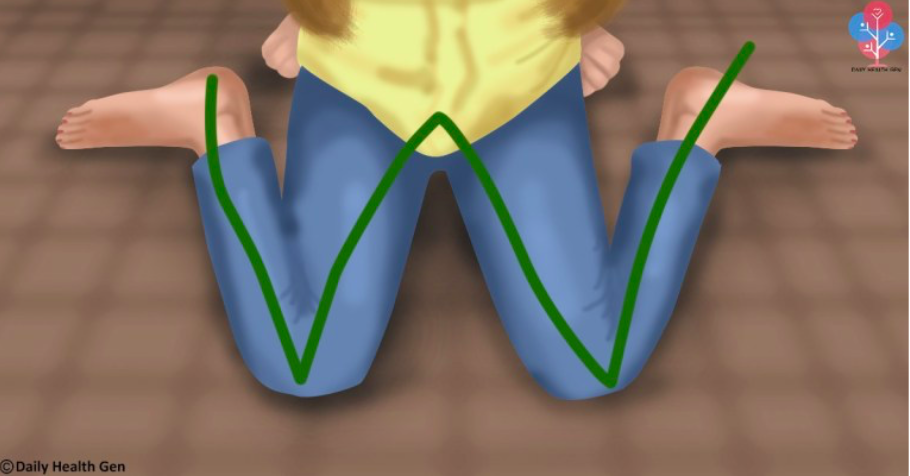W-sitting is not recommended for anyone. Many typically developing children do move through this position during play, but all parents should be aware that this position can lead to future orthopedic problems.
Why does children W-sit? Every child has to to play and children who are challenged motorically like to play as much as anybody. They do not want to worry about keeping their balance when they are concentrating on a toy.
A child is “fixed” through the trunk when in the W-position. This allows for play with toys in front but does not allow trunk rotation and lateral weight shifts (twisting and turning to reach the toys on either side). Trunk rotation and weight shifts over one side to allow a child to maintain balance while running outside or playing on the playground and are necessary for crossing the midline while writing and doing tabletop activities.
Who should not w-sit?
For many kids, this sitting position ought to be discouraged. The W-sitting position is contraindicated (and could be detrimental) for a child if one of the following exists:
- There are orthopedic concerns. W-sitting can incline a child to hip dislocation, so if there is a history of hip dysplasia, or worry has been raised in the past, this position ought to be avoided.
- If there is muscle tightness, W-sitting will aggravate it. This position puts the hamstrings, hip adductors, internal rotators, and heel cords in an extremely shortened range. If a child is inclined to tightness or contractures, encourage another example of sitting.
- There are neurologic concerns/developmental delays. In the event that a child has increased muscle tone (hypertonia, spasticity), W-sitting will feed into the abnormal patterns of the movement trying to be avoided (by the direction of the child’s therapist). Utilizing other sitting positions will help in the development of more desirable movement patterns.
W-sitting can likewise discourage a child from developing a hand preference. Since no trunk rotation can take place when W-sitting, a child is less disposed to reach across the body and instead picks up objects on the right with the right hand, and those placed to the left with the left hand.
Try sitting in different positions. Notice how you got there, got out, and what it took to balance. A lot of the movement components you are trying to encourage in a child are utilized when getting in and out of sitting. Transfers in and out of the Q-position, however, are skilled through straight-plane (directly forward and backward) movement only. No trunk rotation, weight shifting, or righting reactions are needed to assume or maintain W-sitting.
How to prevent W-sitting
The best and the easiest way to prevent an issue with W-sitting, is to prevent it from turning into a habit it the first place. Anticipate and catch it before the child even learns to W-sit. Children ought to be placed and taught to assume alternative sitting positions. If a child finds out W-sitting anyway, help him to move to another sitting position, or say, “Fix your legs.” It is crucial to be as consistent as possible.
When playing with a child on the floor, you should hold his knees and feet together when kneeling or creeping on his hands and knees. It will not be possible to get into a W-position from there. The child will either sit to one side or sit back on his feet. Then he can be helped to sit over to one side from there (try to encourage sitting over both the right and left sides). These patterns demand a certain amount of trunk rotation and lateral weight shift and should fit with a child’s therapy goals.
If a kid is not able to sit alone in any position other than a W, talk with a therapist about supportive seating or some other optional positions such as prone and side-lying. Another position is Tailor sitting against the couch; a small table and chair.
